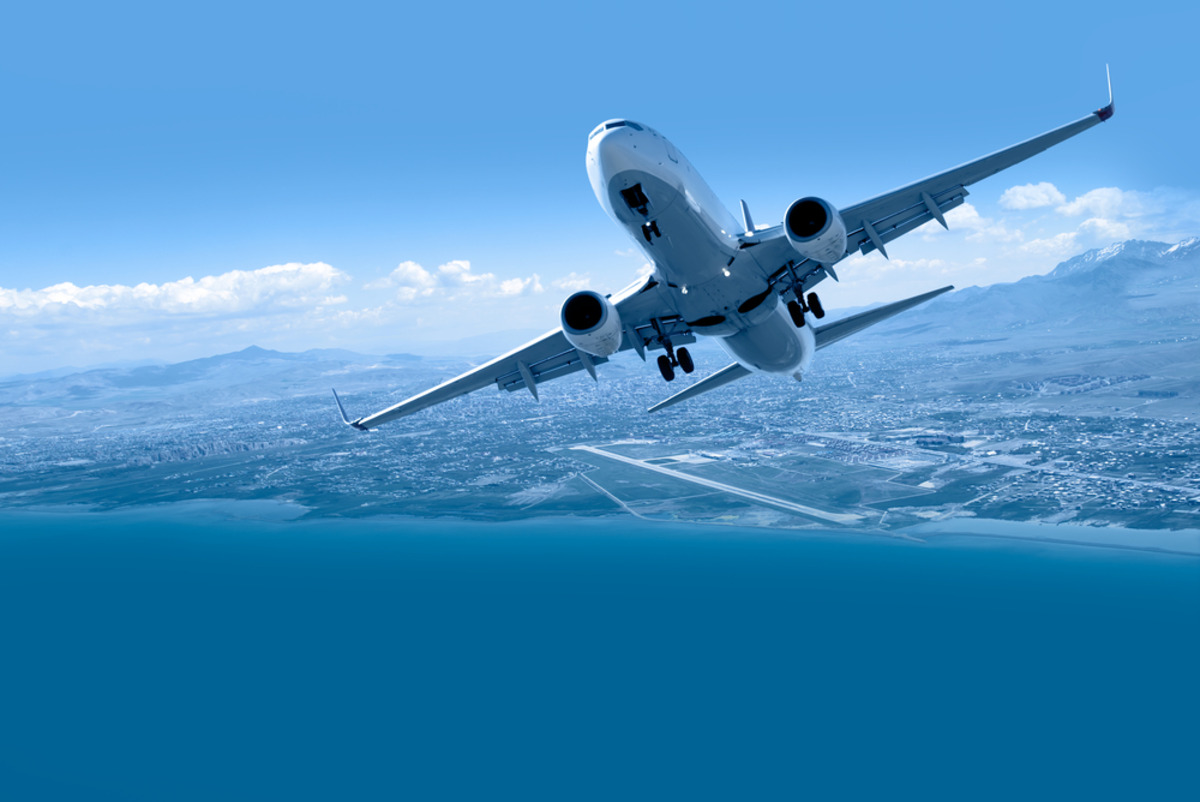Air travel remains one of the safest modes of transportation, but recent incidents have reminded us that airline safety must never be taken for granted. Recent reports of a tragic mid-air collision over Washington D.C. and the Alaska Airlines flight 1282 incident in early 2024 have reignited global conversations about aviation security, pilot training and aircraft maintenance.
Analytics company Quantum Metric reveals that one in five travelers aged 18-54 now checks the aircraft type when buying an air ticket. In addition, one in four plans to take fewer flights due to safety concerns.
A recent airline safety study revealed that between 2018 and 2022, the global death risk per flight boarding was approximately one in 13.7 million. In comparison, the World Health Organization estimated 1.19 million fatalities from road accidents in 2023, equating to more than two deaths per minute.
While these statistics restate the relative safety of flying, the loss of over 200 lives in December 2024 alone significantly surpasses the 72 fatalities recorded by the International Air Transport Association (IATA) in 2023.
In this ranking of the top 25 safest airlines in 2025, we highlight the industry leaders who prioritize passenger security above all else. These airlines have demonstrated excellence in safety management, rigorous pilot training programs and cutting-edge aircraft maintenance.
Top 15 safest airlines in the world in 2025
According to AirlineRatings.com‘s latest ranking, here are the top 25 safest full-service airlines this year:
1. Air New Zealand
Air New Zealand has 98 operating aircraft ranging from Boeing 787-9 Dreamliners and Airbus A320s to ATRs and Q300s. It’s a modern fuel-efficient fleet with an average age of 6.7 years. Air New Zealand’s global network of passenger and cargo services centers around New Zealand. Pre-Covid, the airline flew more than 17 million passengers every year, with 3,400 flights per week.

2. Qantas
Emerging as the second safest full-service airline, Qantas flies to more than 135 destinations around Australia and the world.
“It was extremely close again between Air New Zealand and Qantas for first place with only 1.50 points separating the two airlines. Whilst both airlines uphold the highest safety standards and pilot training, Air New Zealand continues to have a younger fleet than Qantas which separates the two,” stated AirlineRatings.com CEO Sharon Petersen.

3. Cathay Pacific
In third place came Cathay Pacific which flies to over 200 destinations. It is the flag carrier of the Chinese Special Administrative Region of Hong Kong, with its head office and main hub located at Hong Kong International Airport.
“The three-way tie for third place was because we simply could not separate these airlines. From fleet age to pilot skill, safety practices, fleet size, and number of incidents, their scores were identical,” added Petersen.

3. Qatar Airways
Also emerging as the third safest full-service airline, Qatar Airways currently flies to over 170 destinations worldwide, connecting through its Doha hub, Hamad International Airport. It was named the ‘World’s Best Airport’ by Skytrax in 2021, 2022 and 2024.

3. Emirates
With one of the youngest fleets in the world made up entirely of Emirates A380 and Boeing 777s, Dubai-based Emirates flies to over 135 destinations every year. Last year, the airline rolled out 36 fully refurbished aircraft (26 A380s and 10 Boeing 777s) with new interiors that include highly lauded Premium Economy as part of its multi-billion dollar retrofit program.

4. Virgin Australia
The fourth safest full-service airline in the world this year was Virgin Australia. The airline has more than 94 aircraft in operation. The carrier has over a 30 percent share of the Australian domestic market with close to 3,000 flights a week, carrying nearly 19 million domestic passengers a year to 33 domestic destinations.
The international network also covers 6 international destinations including New Zealand, the Pacific Islands, Indonesia and Japan with nearly 200 flights per week and carrying close to 1.3 million international passengers a year.

5. Etihad Airways
In 5th place came Abu Dhabi-based Etihad Airways. In the full year of 2024, Etihad Airways carried 18.5 million guests, with a passenger load factor of 87 percent across the year, up 1 percent from 2023 when the airline carried 14 million guests. The airline has grown its fleet by 14 aircraft in 2024, currently operating 97 airplanes to 71 destinations globally.

6. ANA
Ranked as the 6th safest full-service airline in the world All Nippon Airways (ANA) is a Japanese airline headquartered in Minato, Tokyo. ANA operates services to both domestic and international destinations and is Japan’s largest airline, ahead of its main rival flag carrier Japan Airlines.

7. EVA Air
In seventh place came EVA Air, an international airline headquartered in Taoyuan City. It is one of the two largest airlines in the Republic of China and Taiwan along with state-owned China Airlines. The privately owned airline operates passenger and dedicated cargo services to over 40 international destinations in Asia, Australia, Europe and North America.

8. Korean Air
Korean Air is the flag carrier of South Korea. The airline’s international passenger division and related subsidiary cargo division together serve 126 cities in 44 countries. Its domestic division serves 13 destinations.

9. Alaska Airlines
Ranked as the 9th safest full-service airline in the world, Alaska Airlines is a major American airline headquartered in SeaTac, Washington, within the Seattle metropolitan area. It is the sixth-largest airline in North America when measured by scheduled passengers carried, as of 2023.

10. Turkish Airlines
In 10th place came Turkish Airlines, the flag carrier of Türkiye. As of June 2024, it operates scheduled services to 352 destinations in Europe, Asia, Oceania, Africa and the Americas. The airline serves more destinations non-stop from a single airport than any other airline in the world and flies to 131 countries.

11. TAP Portugal
Ranked as the 11th safest full-service airline in the world, TAP Air Portugal carried a total of 16.1 million passengers in 2024, 1.6 percent more than in 2023.

12. Hawaiian Airlines
Hawaiian Airlines is a commercial U.S. airline, headquartered in Honolulu, Hawaii, and a subsidiary of Alaska Air Group. It is the largest operator of commercial flights to and from the island state of Hawaii. In addition, it is the tenth largest commercial airline in the United States by passengers carried.

13. American Airlines
Ranked as the 13th safest full-service airline in the world, American Airlines is a major airline in the United States headquartered in Fort Worth, Texas. It is the largest airline in the world when measured by scheduled passengers carried, revenue passenger mile and daily flights.

14. SAS
In 14th place came SAS, Scandinavia’s leading airline that operates from its principal hub at Copenhagen Airport (CPH), complemented by hubs in Oslo (OSL) and Stockholm (ARN). Each year, SAS serves more than 25 million passengers and transports 60,000 tons of cargo to 135 destinations across Europe, the U.S. and Asia.

15. British Airways
The 15th safest full-service airline in the world this year is Britsh Airways. As the UK’s national flag carrier, the carrier serves nearly 200 destinations across more than 65 countries, including routes with its partner airlines. It operates out of three major London airports: London Heathrow, London Gatwick and London City, and serves up to 26 cities in the U.S. alone.

The top 25 safest full-service airlines list also includes Iberia, Finnair, Lufthansa/Swiss, JAL, Air Canada, Delta Airlines, Vietnam Airlines and United Airlines, respectively.
Read: Top 20 busiest airports in the world
How are the safest airlines determined?
AirlineRatings.com utilizes several measures to determine the world’s safest airlines including serious incidents over the past two years, fleet age, fleet size, rate of incidents, fatalities, profitability, IOSA certification, ICAO country audit pass and pilot skill and training.
It is essential to evaluate all these factors in the appropriate context. For example, an airline operating only 100 aircraft experiencing three incidents raises greater concern than an airline with 800 aircraft experiencing six incidents.
Additionally, financial instability within an airline can lead to significant operational challenges, automatically disqualifying it as a candidate. Similarly, any airline found at fault for a crash or failing its IOSA certification cannot be considered.
Another critical factor is how incidents are managed. While incidents occur daily across the aviation industry, the expertise of pilots and crew often determines whether an event remains an incident or escalates into a tragedy.








